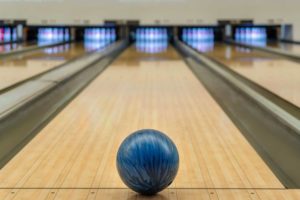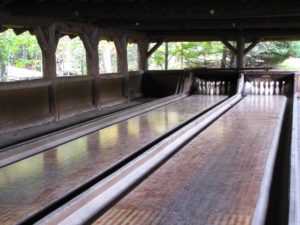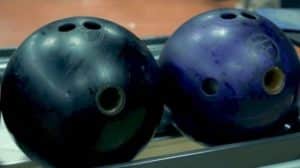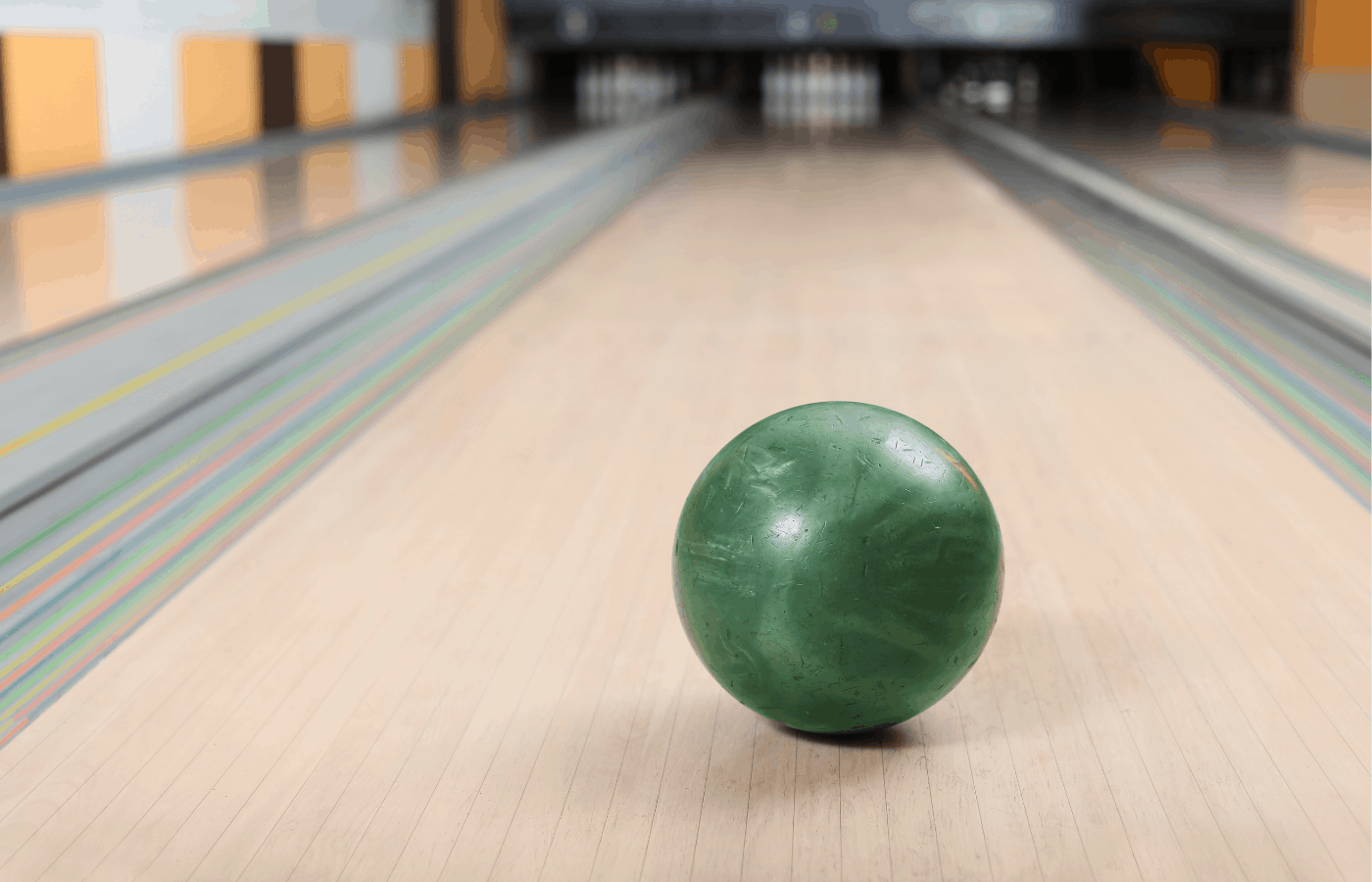Have you ever found yourself stuck in a rut, unable to get that perfect curve on a dry bowling lane? Or maybe you’re just sick and tired of gutter balls? Well, then you’ve rolled onto the right page!

Contents
What Are Dry Lanes
When we say ‘dry,’ we’re talking about lanes that have less oil applied to their surface, and this can drastically change your bowling game. Less oil means less lubrication for the ball to glide smoothly. As a result, your ball may hook earlier or more aggressively than usual.
What Causes Bowling Lanes to Become Dry?
Dry lanes are often not a result of the bowling alley intentionally using less oil.
The most common cause is simply prolonged use. As more and more games are played on a lane throughout the day, the bowling balls pick up oil, slowly drying out the lane.
Environmental factors, such as high temperature and low humidity, can also cause the oil to evaporate faster.
How To Test If it is A Dry Lane
One simple way of testing it is by doing a few roll tests before the game. If the ball hooks aggressively and earlier than usual, it’s likely a dry lane.
You can also check the lane’s appearance. Dry lanes often look duller and have more friction, so your ball might not slide as smoothly as on a well-oiled lane.

How Do Dry Lanes Affect Your Game?
With less oil acting as a lubricant, your ball will tend to hook or curve much earlier and more aggressively than on a well-oiled, slick lane. You might find your ball veering off its intended path, hitting the pins at a different angle, or even missing the sweet spot altogether.
Additionally, the increased friction can slow down your ball’s speed significantly, affecting its overall impact on the pins.
Dealing with Dry Lanes as a Beginner
As a beginner, there are a few strategies you can employ to conquer these challenging conditions.
Adjusting your starting position.
Moving a little to the right (for right-handers) or left (for left-handers) can help you find a better line to the pocket.
Slow down your throw.
Remember, less speed equals less skid and more control.
Investing in a ball designed specifically for dry lanes.
These balls have a harder surface and create less friction, allowing them to slide more smoothly down the lane.

Which Type of Bowling Ball is Best for Dry Lanes?
When it comes to dry lanes, bowling balls with a pearl or polished finish are typically the best choices. These balls have a slick and smooth surface that helps to reduce friction, allowing them to glide easily down the lane without hooking too early.
Additionally, balls with a medium to high RG (radius of gyration) are also an excellent choice. Higher RG balls conserve their energy for longer, meaning they won’t hook too early and will have more power when they reach the pins.
Plastic Bowling Balls
Plastic Bowling Balls are a great option for beginners and seasoned bowlers alike when dealing with dry lanes.
They are typically cheaper than balls made of other materials, offering a budget-friendly choice for those new to the game. Additionally, their durability makes them a long-lasting option.
Urethane Bowling Balls
They are another excellent choice for dry lanes. They offer more friction and hook potential than plastic balls, but they’re generally more controllable than aggressive reactive resin balls.
Urethane balls are perfect for bowlers aiming for a consistent and controlled ball motion on drier lanes. They hit harder than plastic ones due to their increased hook, making them a popular choice amongst more experienced bowlers.

Reactive Resin Bowling Balls
They are the go-to choice for many professionals when facing dry lanes. These balls have a porous coverstock which increases the ball’s traction on the lane, providing a greater hook potential.
However, due to their aggressive nature, they might be harder to control for a beginner.

Tips to Mastering Bowling on Dry Lanes
Here are a few additional tips to help you become a pro at bowling on dry lanes:
- Understand the Lane: Before starting, assess the lane condition using warm-up throws. This will help you adjust your throw and select the appropriate ball for the game.
- Adjust your Ball Speed: On dry lanes, the ball tends to hook more significantly. A slower ball speed can give you more control over the direction of the ball.
- Alter your Launch Angle: Try launching your ball at varying angles during your practice throws. This can help you find the most effective angle for your final throw.
- Invest in a Dry Lane Ball: If you bowl frequently on dry lanes, it may be worth investing in a ball specifically designed for such conditions. As mentioned earlier, plastic, urethane, or reactive resin balls can be great choices.
Wrapping Up
With a bit of understanding about the lane conditions, some adjustments in your game strategy, and the right bowling ball, you can conquer dry lanes like a pro. Remember, every lane is a new challenge and an opportunity to grow as a bowler. So, don’t be disheartened if you don’t get it right the first time. Keep rolling, practicing, and exploring until you find the sweet spot.

Allow me to introduce myself – I’m Eric Wilkinson, a true bowling aficionado. The world of bowling culture has always fascinated me, and I’ve made the exciting decision to share my passion through writing. As I embark on this blogging adventure, my goal is to provide fellow enthusiasts with valuable insights, tips, and captivating stories. Through my blog, I hope to ignite a deeper appreciation for the sport and foster a sense of community among fellow bowlers. Join me on this thrilling journey as we explore the vibrant world of bowling together.
